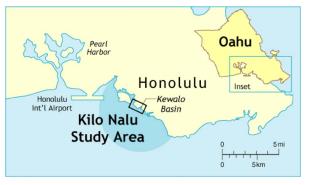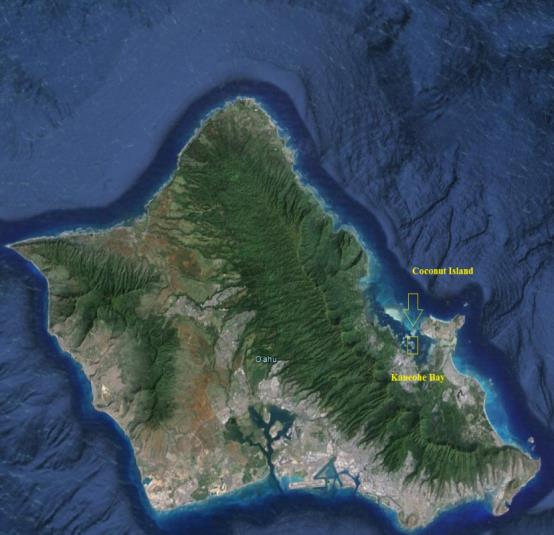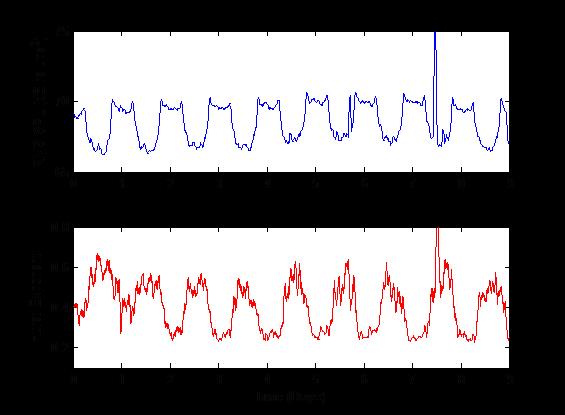
Tyler Hee Wai
John S. Allen III – alleniii@hawaii.edu
Department of Mechanical Engineering
University of Hawaii - Manoa
2540 Dole St., Holmes Hall 302, Honolulu, HI, 96822, USA
John Gebbie and Martin Siderius
Northwest Electromagnetics and Acoustics Research Laboratory
Department of Electrical and Computer Engineering
Portland State University
1900 SW 4th Ave, Suite 160 Portland, OR, 97201, USA
Popular version of paper 4aAB5
Presented Thursday morning, December 5, 2013
166th ASA Meeting, San Francisco
Tropical reef environments are dominated by the noise production of snapping shrimp. Snapping shrimp produce sounds by closing an enlarged claw rapidly, creating a cavitation bubble through the resulting water jet [1].
Snapping shrimp sound production has been studied on short time scales in the laboratory but has not been previously measured in natural environments with recording levels commensurate with the transient nature of the cavitation bubble sound. Furthermore, the collective behavior and associated acoustic signature of many shrimp have not been extensively studied on these time scales over diurnal or weekly periods. Previous field studies have investigated time averaged spectra over time scales of days from data sampled at reduced levels and reported changes in noise production with monthly and seasonal variation [2-4]. However, understanding snapping shrimp sound production over short time scales is important for a variety of biological and maritime security reasons. Biologically, it gives insight into the origins of the snapping. Furthermore, snapping shrimp noise dominates harbors in sub-tropical locations. A knowledge of ambient noise level changes over short time scales is important for acoustic monitoring of potentially dangerous or harmful activities such as maritime smuggling and illegal fishing, which typically occur on the order of minutes to hours. Time series analysis provides for novel insights into the origins of the sound and its daily variations.
We acquired ambient noise data from two sites on Oahu, Hawaii. At Coconut Island, Oahu, Hawaii, we recorded light data and acoustic data over four afternoon-to-sunset periods. A single Reson TC4013 with a sample rate of 100 kHz was placed at one meter of depth. At the Kilo Nalu Ocean Observatory, Oahu, Hawaii, acoustic data were continuously recorded over a period of 8 days at 102.4 kHz with a 24 element hydrophone array (High Tech Inc, Gulfport, Mississippi). The hydrophone array was placed at the ocean floor, at a depth of 12 meters.

Fig. #1A The Kilo Nalu Ocean Observatory, Oahu, HI.

Fig. #1B Coconut Island, Oahu, HI.
The real-time video (11/12/13), taken at Coconut Island, shows the increasing root mean square (RMS) ambient noise level as sunset occurs. A light meter was used to measure the amount of light from the sun in lux and time synchronized a single hydrophone measured the ambient noise background. The RMS sound pressure level (SPL) of the ambient noise was calculated and portrayed at the bottom right. The bottom left shows the light level in lux. Time lapse photography with a rate of one image per second shows the change in the environment as sunset occurs as noise level from the snapping shrimp significantly increases on the order of several decibels. An audio file provides a sample of the sounds at the end of this video segment.
AUDIO (last segment of video)
The ambient noise level transitions between two distinct levels. There is a lower sound pressure level during the day, and a higher sound pressure level at night. There is a fairly quick rise and fall between the two levels lasting about two hours, and peaks in the sound pressure levels right after the rise at sunset and just before the decrease at sunrise. This general trend was also documented over several days of measurements at the Kilo Nalu site.
Fig. 2 shows analysis of four days of data from the continuous recording at the Kilo Nalu.

Fig. #2: RMS SPL levels and the corresponding standard deviation and skewness levels
We consider the standard deviation and the skewness of the signal as a function of time. Standard deviation is a measure of how much the signal varies from its mean. Skewness is a measure of the asymmetry of the distribution. If the probability density function has a larger negative tail, it will have negative skewness (and vice versa for a positive tail). These statistics suggest that snapping shrimp activity dominates the diurnal rise and fall in the ambient noise levels.
The data is taken from four days (August 4-8, 2011) of continuous recording from the Kilo Nalu site. The high peaks during the daytime hours are attributed to shipping noise as verified through optical records. The standard deviation and skewness follow the general pattern of the RMS levels, with the increased level during the night and peaks at sunset and sunrise. Snapping shrimp cavitation bubbles are impulse events which can cause a high pressure deviation from the mean. The increased standard deviation during the increased RMS levels indicates that the SPL variation is a result of high variance, such as these cavitation bubbles. Events with very high pressure values over the mean will lead to a positive skewness, as the positive tail will be more pronounced. The increased skewness with SPL increases suggests that the increased SPL is the result of events with high values over the mean.
We also computed the Hurst exponent of the signal from Detrended Fluctuation Analysis (DFA) over an eight day period (August 4-13, 2011) of the data from the Kilo Nalu site. DFA is a method used to find the extent of long range correlations in a time series. From this analysis, we can calculate the Hurst exponent, which is a measure of the predictability of a time series. The Hurst exponent is very low during the night time periods, fluctuating about 0.25. During the daytime periods, it is significantly higher, about 0.5. Hurst exponents of about 0.5 indicate that the signal is fairly random. Hurst exponents lower than 0.5 indicate that the time series tends to revert to the mean. The collective behavior of the shrimp during sunset is characterized by strong clusters of cavitation events which may be associated with increased feeding or more physical activity in general, since there may be fewer predatory species during the night time hours. Furthermore, this analysis indicates that the sound pressure levels are more stable over the night time period with any high pressure events reverting quickly back to the mean pressure levels. In contrast, the dominant sounds during the day such as shipping noise and sea state noise do not necessarily directly revert to the mean levels. Moreover, there are in general more random fluctuations or disturbances to the sound pressure levels during this period.
We have obtained real-time measurements of collective snapping shrimp ambient noise production and performed time series analysis on these acoustic signals. Our analysis suggests collective activity during sunset and sunrise which can be differentiated from daily and night behavior through the Hurst exponent. This report in diurnal variations in snapping shrimp noise productions are to our knowledge not completely understood and are subjects of on-going investigations.

Fig. #3: RMS SPL levels and the corresponding Hurst Exponent.
Reference:
[1] 1 Versluis et al., "How Snapping Shrimp Snap: Through Cavitating Bubbles," Science, 289, pp.2114-2117, 2000
[2] F. Everest et al, "Acoustical Characteristics of Noise Produced by Snapping Shrimp," JASA, 20 (2), pp 137-142, March 1948
[3] W. Au, K. Banks, "The acoustics of the snapping shrimp Synapheus parneomeris in Kaneohe Bay," JASA, 103 (1), pp. 41-47, Jan 1998
[4] Radford et al, "Temporal patterns in ambient noise of biological origin from a shallow water temperate reef," Oecologia, 156, pp 921-929, 2008